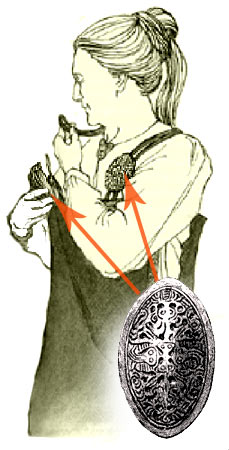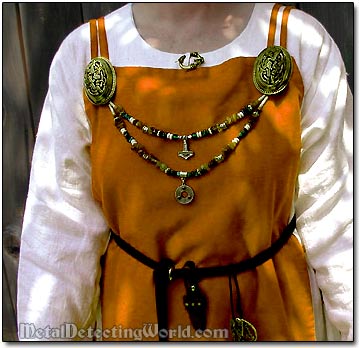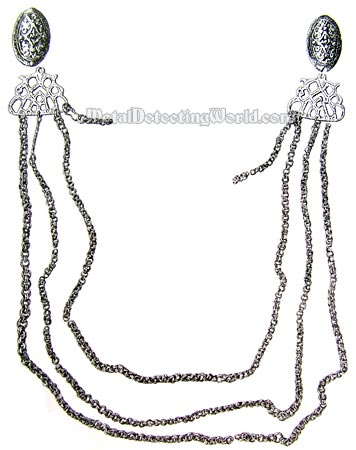Relic Hunting In Karelia
Rare Viking Relic Find
Viking Women's Fibulae were usually characteristic of a particular Culture. Scandinavian Women wore Oval or Tortoise Brooches to fasten an overdress or apron.

Medieval Karelian Woman's Outfit with Two Tortoise Fibulae Replicas

A Pair of Fibulae Decorated with Pendants and Chains

I even found an illustration of a few types of Tortoise Fibulae in the archaeological book. It included a fibula that was identical to mine (I placed my find next to the identical one in the picture).

The illustration above made me reexamine my other find - bronze badge, which I recovered at the site during my first visit. If to compare the tip of the badge (picture below) to the tip of the brooch on the most right in the picture above, one could see that they match! It means that I found a fragment of another Tortoise Fibula of a different type!

According to the archaeological book, "Tortoise Fibulae range from elaborate double-shelled brooches with openwork outer shells, often further decorated with silver wire, to bronze-cast, single-shelled brooches, which were mass-produced, and often crudely decorated."
Fibula's Details

Image of Octopus

Fibula's Back


A Hook for Safety-Pin

One archaeological book mentioned that there were only 26 Tortoise Fibulae discovered in Karelia! Oh well, I got the 27th.
Right after I posted this story, I
received an e-mail from a fellow treasure hunter Ossi in Finland:
"Those
kind of oval brooches were typical decoration for Karelian women at late iron
age AD 1000-1200. It was obviously copied from Vikings, but I believe this is
Karelian because it is found at the heart area of Karelian tribe. At the time
your brooch was made, Karelian tribe lived it is most prosperous times, they even
attacked Sigtuna, a capital of Sweden at that time. According to Eric's chronicle
(the oldest Swedish chronicle), they burned and plundered the city and killed
the Arch Bishop in 1187. They were still pagans at that time, soon after they
were converted by Novgorod. Karelians also attacked several times against other
Finnish tribes, especially after they got under Novgorod's command."
You can look at another example of Scandinavian type fibulae on a page with metal detecting finds of two detectorists from Finland - Finds of Markus and Tapio, page 3.